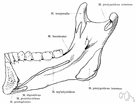

This means it is sensible to ask if female cats qualify for the same program. You probably noticed that the cat notched ears program is called TNR, or Trap, Neuter, Release. There isn’t one way that is better or worse, but it can be confusing if you have been used to one type of messaging system and are suddenly confronted with a different system. However, as Neighborhood Cats points out, some programs do things differently and choose to tip the right ear and tip it to seven millimeters.

In most places, it is customary to notch the tip of the left ear and to tip it one centimeter from the ear point. Why Not Choose Just One Ear and One Length to Notch for Consistency? The wound is immediately cauterized or sutured and monitored so that by the time the cat has healed from the spay or neuter surgery, the ear has also healed and the cat is ready to be released. The goal is to make sure the cat does not experience any pain from the procedure and also to send a lasting message to future cat activists that the cat has already been fixed.ĭuring the procedure, which is typically done at the same time the cat is being neutered or spayed, the very top one centimeter or seven millimeters of the cat’s left or right ear is trimmed away. Neighborhood Cats also offers a good step-by-step text explanation of exactly how the procedure is performed. What Happens During a Cat Ear Notching Procedure?Īs you observed in the short video you just watched, a cat ear notching procedure is a simple, straightforward procedure that is done in sanitary conditions by a trained veterinary professional. Not only does this ensure the procedure is painless to the cat and is done safely under sanitary conditions, but it also protects that cat from being picked up again in another feral raid. This procedure is typically done while a cat is being “fixed” (i.e. In this short YouTube video, you can watch trained veterinary surgeons performing a typical “ear tipping” or “ear notching” procedure.

TNR stands for “Trap, Neuter, Return,” as Cats Exclusive Veterinary Clinic explains. This is an important part of community TNR programs. Why Do Some Cats Have Notched Ears?Įar notching is typically done to alert people that the cat in question has been spayed or neutered.
#Notched up meaning how to
Also discover how to identify if a cat has had this procedure done and how it helps feral cats and people. In this article, learn what it means when a cat has notched ears. This is the basic premise behind notched ears. This is important for a number of reasons, but it is vital to have a method to let other cat rescuers know that a cat has already been cataloged and cared for. People who love cats and want to help these animals have developed various methods of supporting local feral cats who live in their area. The ECG in Acute MI.In some communities, feral or free-living cats have become an increasingly serious problem. ECG in Emergency Medicine and Acute Care 1e, 2004 ECG’s for the Emergency Physician Part I 1e, 2003 and Part II Chou’s Electrocardiography in Clinical Practice: Adult and Pediatric 6e, 2008 Critical Decisions in Emergency and Acute Care Electrocardiography 1e, 2009 Marriott’s Practical Electrocardiography 13e, 2021 Electrocardiography in Emergency, Acute, and Critical Care. ECG Blue Belt online course: Learn to diagnose any rhythm problem. ECG Yellow Belt online course : Become an ECG expert. Delayed overall conduction time to the LV extends the QRS duration to > 120 msġ) Conduction delay means impulses travel first via the right bundle branch (black arrow)Ģ) Septum is activated from right-to-left (yellow arrows)ģ) Overall depolarisation vector is directed towards lateral leads (red arrow).The delay between activation of the RV and LV produces the characteristic “M-shaped” R wave seen in lateral leads The overall depolarisation vector from the right to left ventricle produces tall R waves in lateral leads (I, V5-6) and deep S waves in the right precordial leads (V1-3).Septal activation is thus reversed eliminating lateral Q waves.In LBBB, conduction delay means that impulses travel first via the right bundle branch to the RV, and then to the LV via the septum.In normal cardiac conduction, impulses travel equally down the left and right bundles, with the septum activated from left to right and the formation of small Q waves in lateral leads


 0 kommentar(er)
0 kommentar(er)
